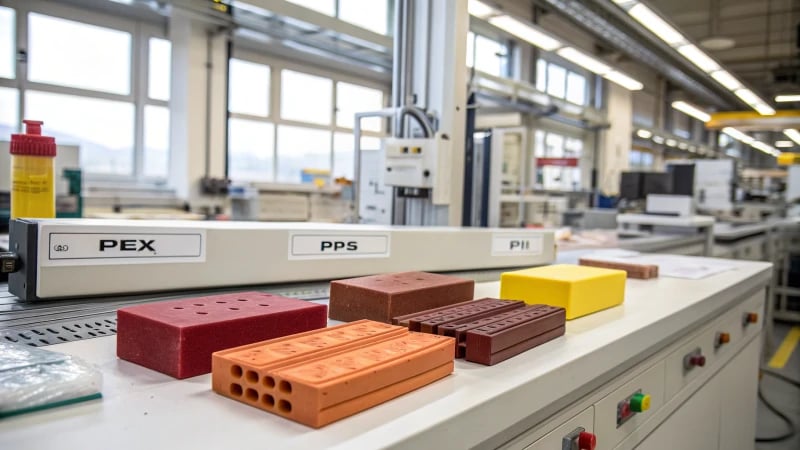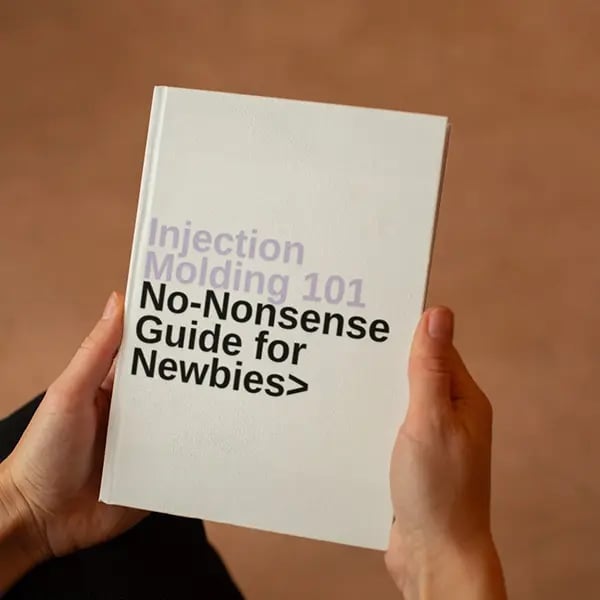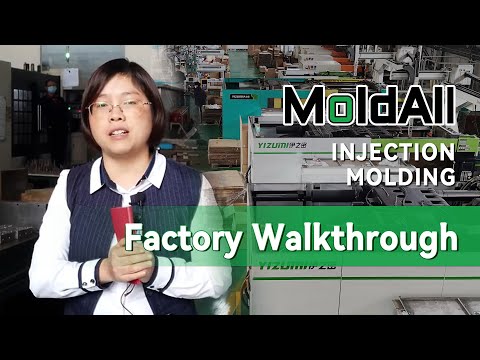
Navigating the maze of high-temperature injection molding can feel overwhelming, especially when choosing the right materials for your project.
PEEK, PPS, and PI are ideal for high-temperature injection molding due to their excellent heat resistance, strength, and chemical stability. Choice depends on temperature requirements, mechanical properties, and budget.
If you’ve ever faced the challenge of picking materials for a project that needs to withstand extreme heat, you’ll know it’s more than just a technical decision—it’s personal. Each factor, from heat resistance to mechanical properties, plays a crucial role in ensuring your design holds up under pressure. When I first started out, I remember feeling lost in a sea of acronyms like PEEK and PPS. It took some trial and error to figure out what worked best.
Let’s dive deeper into these factors. For example, when considering heat resistance, I always think about the long-term temperature requirements of my projects. I learned early on that if a part needs to operate consistently above 200°C, PEEK‘s ability to withstand up to 250°C makes it invaluable. Similarly, understanding a material’s mechanical properties—like strength and stiffness—can make or break a project, especially in demanding environments like automotive engines or industrial machinery.
Remember, it’s not just about picking a material off a list; it’s about aligning the material’s properties with the specific needs of your project to ensure success. Choosing wisely means balancing performance with cost and availability to keep production efficient and effective.
PEEK is suitable for high-temperature injection molding.True
PEEK offers excellent heat resistance, mechanical strength, and stability.
Polyimide is the least heat-resistant material for molding.False
Polyimide is known for its superior heat resistance in molding.
- 1. How does heat resistance affect material choice?
- 2. What Are the Key Mechanical Properties to Consider?
- 3. Why Is Chemical Stability Important in Material Selection?
- 4. How Do Processing Performance Factors Influence Material Suitability?
- 5. How Do Cost and Availability Influence Material Selection?
- 6. Conclusion
How does heat resistance affect material choice?
Ever wonder why choosing the right material for high-temperature projects feels like a puzzle?
Heat resistance influences material selection for high-temperature environments, with PEEK and PPS preferred for conditions over 200°C due to their exceptional heat endurance.

Understanding Heat Resistance in Materials
When I first started working in product design, the concept of heat resistance seemed abstract. But after a project involving engine components, it became clear how crucial this factor is. Heat resistance isn’t just a technical term—it’s the difference between a component that lasts and one that doesn’t.
Long-term and Instantaneous Heat Resistance
Picture this: you’re designing a component for an engine, where temperatures can soar instantly. Materials like polyetheretherketone1 (PEEK) and polyphenylene sulfide2 (PPS) became my go-to choices because of their ability to endure these intense conditions. PEEK’s capability to withstand up to 300°C instantly was a lifesaver in one particular project, allowing me to confidently promise durability.
| Material | Continuous Use Temperature | Instantaneous Temperature |
|---|---|---|
| PEEK | 250°C | 300°C |
| PPS | 220°C | 260°C |
Mechanical Properties and Heat Resistance
I remember a colleague who swore by polyimide3 (PI) for its unmatched strength, especially in demanding machinery parts. It got me thinking about the balance between heat resistance and mechanical robustness. In precision electronics, liquid crystal polymers (LCPs) have become a staple because of their excellent properties.
Chemical Stability and High Temperatures
Selecting materials for harsh chemical environments always feels like playing chess. You have to anticipate every move, like choosing PEEK or PPS for automotive fuel systems. Their chemical resilience was something I learned to appreciate deeply during a challenging project on chemical equipment.
Processing Performance and Material Cost
When it comes to processing, flowability can make or break efficiency. I’ve found polyetherimide4 (PEI) incredibly helpful due to its superior flowability during injection molding. However, the cost often makes me pause; it’s a delicate balance of performance versus budget, with materials like PEEK being pricier but essential for certain high-performance needs.
Navigating these choices has been an educational journey, reminding me that while material science can seem daunting, it’s ultimately about finding the right fit for each unique application.
PEEK withstands up to 300°C instantly.True
PEEK can handle instantaneous temperatures of up to 300°C.
PPS offers better flowability than PEI.False
PEI has better flowability due to its amorphous nature.
What Are the Key Mechanical Properties to Consider?
Every material has a story, and knowing their mechanical properties is like learning their language. From strength to ductility, these traits reveal how materials perform under pressure and in different environments.
Consider key mechanical properties like strength, stiffness, toughness, ductility, and hardness to assess material performance under stress and suitability for applications.

Strength and Stiffness
I remember the first time I held a piece of polyimide (PI) in my hands during an engineering project. It felt as solid as it sounds—a material that promises not to buckle under pressure. Strength refers to a material’s ability to withstand force without snapping, while stiffness is all about resisting deformation. Imagine trying to bend a metal rod with your bare hands; that’s stiffness at work. Both properties are crucial for components like engine parts5 and industrial machinery, where reliability is non-negotiable.
Polyimide (PI) and liquid crystal polymer (LCP) are champions in this arena, offering impressive high-temperature resistance and precision. They’re like the unsung heroes in demanding applications, standing strong where others might falter.
Toughness and Impact Resistance
Toughness isn’t just for superheroes; it’s a material’s capacity to absorb energy and plastically deform without breaking. I recall working on an aerospace project where impact resistance was critical—like having a friend who can take a punch without flinching. Polyetherimide (PEI) became our go-to material due to its heat resistance and toughness. It’s the kind of material you want when things get bumpy or when sudden forces strike.
Consider this table for quick reference:
| Material | Toughness | Impact Resistance |
|---|---|---|
| PEI | High | Excellent |
| PI | Moderate | Good |
| LCP | High | Excellent |
Ductility and Hardness
Ductility is what I call the "stretch factor." It’s about how much a material can be stretched or shaped without snapping—ideal for bending or forming into intricate designs. On the other hand, hardness is about resisting surface indentation, like trying to scratch glass with your fingernail.
Polyetheretherketone (PEEK) is a star here, especially with its low shrinkage rates. This helps maintain dimensional accuracy, which is crucial when you’re dealing with injection molding of precision parts.
Chemical Stability and Processing Performance
Chemical stability is like having a suit of armor against corrosion and solvents, making materials like polyphenylene sulfide (PPS) invaluable for chemical equipment6 or automotive components. Meanwhile, processing performance is all about flowability and shrinkage rate.
I’ve found that crystalline materials might struggle with flowability, but amorphous materials like PEI glide through injection molding processes with ease. Understanding these properties allows designers like me to select materials that align with our project’s structural and environmental demands.
Polyimide is known for high temperature resistance.True
Polyimide (PI) exhibits excellent high temperature resistance, making it suitable for demanding applications.
PEI has low impact resistance.False
Polyetherimide (PEI) is known for excellent impact resistance, particularly useful in aerospace applications.
Why Is Chemical Stability Important in Material Selection?
Ever wondered why some materials seem to last forever, while others crumble at the first sign of trouble? Chemical stability is the secret behind their durability!
Chemical stability in material selection is vital for preventing degradation, ensuring durability, safety, and performance, especially in harsh environments.

Understanding Chemical Stability
When I first started diving into the world of material selection7, I quickly realized that chemical stability was like the unsung hero of durability and safety. Imagine working with materials that need to withstand everything from scorching heat to relentless moisture, not to mention all sorts of chemicals trying to break them down. Chemical stability is what stops these materials from falling apart, making sure they perform reliably, whether they’re in the guts of a car engine or flying high in aerospace.
Take automotive engines, for example. These beasts endure crazy high temperatures and get exposed to all sorts of corrosive fluids. I learned that materials like polyetheretherketone (PEEK) are often the go-to choice here because they can take the heat and shrug off those nasty chemicals.
Chemical Stability in High-Temperature Applications
Choosing the right material gets even trickier when you throw high temperatures into the mix. I remember chatting with a fellow designer who shared how critical it was to pick a material that wouldn’t melt under pressure. As temperatures rise, the chances of chemical reactions skyrocketing also increase, threatening to degrade the material.
| Material | Continuous Use Temp (°C) | Instantaneous Heat Resistance (°C) |
|---|---|---|
| PEEK | 250 | 300 |
| PPS | 220 | 270 |
These heroes of high stress keep it together even when things heat up, making them perfect for engine components and other demanding applications.
Evaluating Corrosion and Solvent Resistance
I can’t stress enough how important it is to pick materials with strong corrosion and solvent resistance, especially in harsh environments. Think about it: in chemical processing or fuel systems, using something like polyphenylene sulfide (PPS) or polysulfone (PSU) can be the difference between a long-lasting part and a quick trip to the trash.
One time, I worked on a project involving electronics housings where solvent exposure was a real concern. We chose polyimide (PI) because of its excellent solvent resistance. It was reassuring to know that even with constant exposure, our components wouldn’t degrade.
Mechanical Properties and Chemical Stability
Balancing mechanical properties with chemical stability is another puzzle piece in material selection. For parts that take a beating, like injection-molded components subject to intense forces, you need materials that are both strong and stable. Polyimide (PI), for instance, offers a fantastic mix of high temperature resistance and mechanical strength—ideal for high-demand situations.
Then there are parts that have to withstand vibrations or impacts without losing their cool. Polyetherimide (PEI) is great for this, providing toughness without sacrificing chemical stability.
All in all, selecting the right material means considering a whole host of factors to ensure everything works smoothly in its intended application.
PEEK can withstand 300°C instantaneously.True
PEEK has an instantaneous heat resistance of 300°C, making it suitable for high-temperature applications.
PI materials lack solvent resistance.False
Polyimide (PI) materials exhibit excellent solvent resistance, suitable for electronics housings.
How Do Processing Performance Factors Influence Material Suitability?
Ever wondered why some materials just ‘click’ with certain manufacturing processes? Let’s dive into the nitty-gritty of how processing performance factors can make or break material suitability.
Processing performance factors such as flowability, shrinkage rate, and temperature resistance determine material suitability in injection molding, impacting production quality, efficiency, and cost-effectiveness.

When I first stepped into the world of mold design, the importance of understanding processing performance factors became glaringly obvious. It’s like being a chef who knows which ingredients will create the perfect dish. Let’s dig into these essential components that can transform your projects.
The Role of Flowability
Flowability might sound technical, but think of it as how smoothly a material can fill up a mold. Imagine pouring syrup versus water; that’s flowability in action. Crystalline materials are like that syrup, while non-crystalline ones glide like water. I remember my first project with polyphenylene sulfide (PPS)8. It required cranking up the heat and pressure to get that perfect flow, a lesson I won’t forget.
| Material Type | Flowability | Example Material |
|---|---|---|
| Crystalline | Poor | PPS |
| Non-Crystalline | Good | PEI |
Shrinkage Rate Considerations
Shrinkage is like baking a cake that comes out smaller than the batter you poured. It affects the final shape and size of molded parts. High shrinkage can warp or crack your design, so low-shrinkage materials like polyetheretherketone (PEEK)9 are ideal for those moments when precision is everything.
Heat Resistance: Long-term vs Instantaneous
In my line of work, choosing materials that can withstand heat is crucial—like picking the right outfit for an unpredictable climate. For long-term heat endurance, materials such as polyetheretherketone (PEEK)10 or polyphenylene sulfide (PPS) are fantastic choices. However, if it’s about handling sudden heat spikes, PEEK is your go-to guy, managing up to 300°C without breaking a sweat.
Mechanical Properties: Strength and Toughness
Strength and toughness are like two sides of a coin in material selection. I’ve had projects where polyimide (PI)11 saved the day with its robust characteristics, especially under stress. Liquid crystal polymer (LCP) also shines in environments where electronic components need just the right balance of flexibility and rigidity.
Chemical Stability: Corrosion and Solvent Resistance
Working with materials in harsh environments is like sending them into battle—they need armor. Materials like polyetheretherketone (PEEK)12 and polyphenylene sulfide (PPS) are my top picks for their resilience against corrosion and solvents, ensuring the parts last as long as needed.
By balancing these factors, you ensure your final product isn’t just good enough but exceptional, standing up to the demands of its application environment with grace.
Crystalline materials have better flowability than non-crystalline ones.False
Crystalline materials typically exhibit poor flowability compared to non-crystalline ones.
PEEK offers superior instantaneous heat resistance up to 300°C.True
PEEK is known for its excellent instantaneous heat resistance, reaching up to 300°C.
How Do Cost and Availability Influence Material Selection?
Ever find yourself torn between cost and availability when choosing materials for a project? It’s a tricky balance that can make or break your project timeline and budget.
Cost and availability are crucial in material selection, influencing affordability and timely delivery, impacting project feasibility, timelines, and expenses. Balancing these with performance needs is essential.

The Impact of Material Cost
Let me take you back to a time when I faced a tough choice between high-cost, high-performance materials and more affordable options. This decision wasn’t just about price; it was about ensuring quality without breaking the bank. High-performance materials like polyetheretherketone (PEEK) offer incredible heat resistance and mechanical strength, but they also come with a hefty price tag. During a budget-sensitive project, I opted for modified polyamide (PA), which was easier on the wallet but still delivered the performance I needed thanks to some clever additive enhancements.
| Material | Cost Level | Key Features |
|---|---|---|
| PEEK | High | High heat resistance, mechanical strength |
| Modified Polyamide | Medium | Improved heat resistance with fillers |
Availability Challenges
Availability is another puzzle piece that’s crucial yet sometimes frustrating. Picture this: you’re all set to go, but suddenly you can’t get your hands on that specific material. It’s like planning a dinner party and realizing the main dish isn’t available anywhere. Widely available materials like polyphenylene sulfide (PPS) are usually a safe bet, ensuring a stable supply chain. But if you’re aiming for something unique like polyphthalamide (PPA), you might find yourself hunting down specific suppliers13, which can throw a wrench in your timeline.
| Material | Availability Level | Procurement Notes |
|---|---|---|
| PPS | High | Easily obtainable |
| PPA | Variable | May need sourcing from select vendors |
Balancing Cost and Availability with Performance
Striking the right balance between cost, availability, and performance is like juggling; it’s all about keeping everything in the air without dropping anything. While opting for lower-cost materials might seem tempting, I learned the hard way that you can’t compromise on essential qualities like heat resistance or toughness. It’s crucial to evaluate long-term use temperature14 and mechanical properties to ensure that even cost-effective materials meet functional needs.
In industries like automotive, I’ve seen decisions where higher costs are justified by long-term reliability. Here, high-strength, high-temperature materials are chosen despite their higher prices because they withstand challenging environments so well.
When deciding on materials, weighing these factors carefully is key to supporting your project’s objectives without exceeding your budget or facing supply chain setbacks.
PEEK is a low-cost material option for projects.False
PEEK is known for high performance but comes at a higher cost.
PPS materials have high availability in the market.True
PPS is widely available, ensuring a stable supply chain.
Conclusion
Explore the best materials for high-temperature injection molding, focusing on PEEK, PPS, and PI. Learn about heat resistance, mechanical properties, chemical stability, processing performance, cost, and availability.
-
Learn about the applications of PEEK to understand its role in high-temperature environments. ↩
-
Discover how PPS performs under high temperatures to see if it fits your needs. ↩
-
Explore why PI is favored in industries requiring robust mechanical strength. ↩
-
Find out why PEI is chosen for its excellent flowability in molding processes. ↩
-
Discover more about materials suited for high-strength applications in engine parts to ensure optimal performance. ↩
-
Understand which materials provide exceptional chemical stability for harsh environments. ↩
-
Explore this link to understand how chemical stability impacts material performance across various industries. ↩
-
Discover why PPS is favored in applications requiring high-temperature stability and chemical resistance. ↩
-
Learn how PEEK’s low shrinkage rate benefits the accuracy of precision parts. ↩
-
Explore PEEK’s capabilities in high-temperature conditions. ↩
-
Understand why PI is preferred for high-demand applications. ↩
-
Learn about PEEK’s chemical stability benefits. ↩
-
Locate reliable suppliers to ensure a steady supply of polyphthalamide for your projects. ↩
-
Understand why considering long-term use temperature is critical for maintaining performance in demanding conditions. ↩






